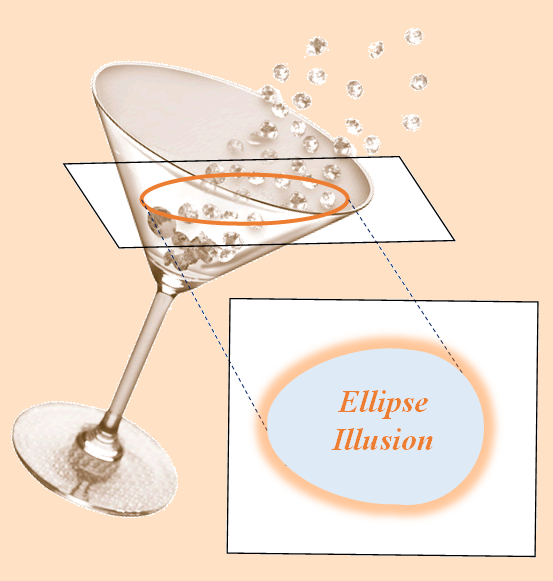|
For stars and planets, for moons and satellites of all kinds, orbits are the thing. Each is said to be an ellipse. Several handy methods are available for drawing an ellipse on paper: pin-and-string, trammel, parallelogram. However, curves followed by celestial bodies are drawn on invisible planes coerced by ellipses sliced from fictitious cones at various angles. Which would not be especially bothersome were it not for the Ellipse Illusion...  Many solvers of Measuring the Moon have studied my proposed celebration of ironic fitness values from The Moon Illusion. Be advised, the Ellipse Illusion is merely an embarrassment. It does not afford evolutionary benefits to its victims.The explanation for the Ellipse Illusion is simple enough [deep breath here]: The local radius of curvature for a smooth shape is defined by the radius of the osculating circle at each point such that one end of the oval drawn upon the sectioning plane seems to share the osculating circle of the cone at a point near its apex where the radius is small while the opposite end of the oval drawn upon the same sectioning plane seems to share the osculating circle of the cone at a point farther away from its apex where the radius is larger.
|
 hat must be the most extraordinary
coincidence in the universe is the fact that
movements of celestial bodies follow curves that
comply with the
hat must be the most extraordinary
coincidence in the universe is the fact that
movements of celestial bodies follow curves that
comply with the 